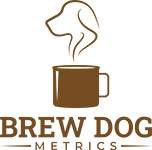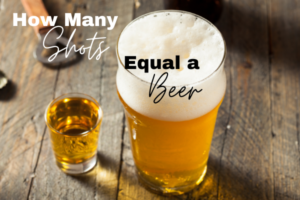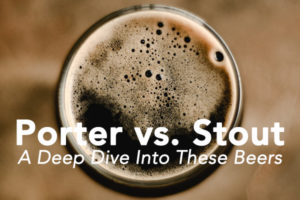Beer, wine, tequila, and champagne are all examples of beverages that contain alcohol. The element that makes you intoxicated is alcohol. Yet, it does not grow on a tree or in the ground. It’s a result of a fermentation process that takes place.
Ethanol or ethyl alcohol is the scientific name for alcohol. People mix yeast and sugar to make ethanol (alcohol).
With this…
It’s crucial to know the ABV of an alcoholic beverage. Especially if you’re launching a new bar or beginning a new brewery to manufacture your own. Understanding how to calculate ABV and how it impacts drinks is critical. This will keep your customers safe and happy. Small changes in ABV impact things like taste and the possibility of intoxication.
What is alcohol by volume?
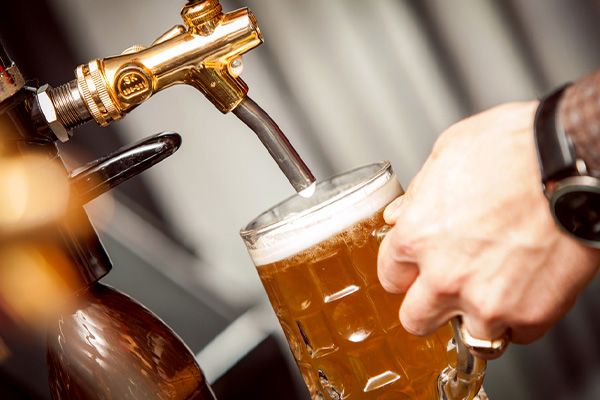
ABV refers to calculating the amount of alcohol in a beverage. This measurement shows the percentage of pure alcohol in the drink’s total volume. The higher the ABV, the higher the ethanol content.
For a variety of reasons, ABV is beneficial. One is that it tells you how much alcohol a beverage contains. You’ll need this information when making a cocktail or responding to a customer’s request.
Two…
It tells you how a drink will taste. Because of their higher alcohol level, beverages with a higher ABV will be harsher on the tongue. You rarely require a bitter recipe for beverages with a high ABV level.
Three…
It aids bartenders in keeping their customers safe. The higher the alcohol by volume (ABV), the more likely a drink may intoxicate you. The bartender notes the ABV levels of the beverages requested by a bartender.
ABV in Different Types of Alcohol
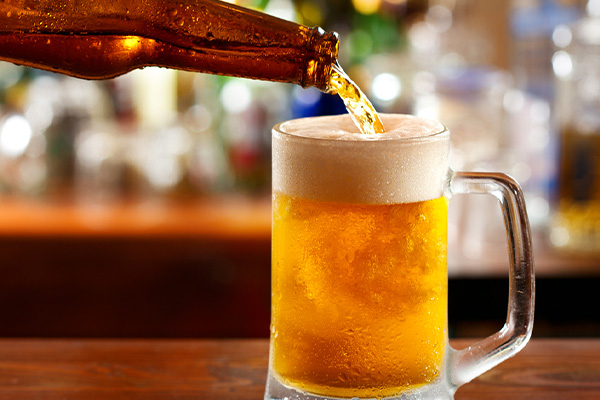
The ABV of alcoholic beverages depends on the type of alcohol you’re drinking. Even though each type of alcohol may have its unique characteristics, most types of alcohol have a set of ABV values that you can expect to see.
Wine ABV
The ABV of wine is still rather high, even though it is not as potent as certain other types of alcohol. Wine has an average ABV of roughly 12%.
Which means it has a higher alcohol concentration than beers and hard ciders. Because sparkling and white wines have a lower ABV of roughly 10%, some outliers are in these figures.
While…
With an ABV of roughly 14%, red wines have a higher alcohol concentration than other wines.
Beyond that, there’s…
Fortified wines are those with the greatest alcohol by volume (ABV). The alcohol by volume (ABV) of fortified wines ranges from 15.5 to 25 percent, with an average of 18 percent. To comprehend how much alcohol is in each glass, consumers must know the ABV of their drinking wine.
Liquor ABV
The term “proof” is always mentioned while discussing hard liquor and when looking at how to calculate ABV values. So, it is frequently included on booze labels. Among alcoholic beverages, liquor does have some of the highest ABV levels. Most liquors range from 40% to 50% ABV. This is a dramatic contrast to other alcoholic drinks like beer and wine. This is why liquor is known for its powerful flavor.
Hard Cider ABV
Although hard cider is sometimes mistaken for beer, it is fermented fruit juice. Hard ciders typically have an ABV of between 4.5 and 7 percent, like beer’s ABV.
And not like brews…
Because the ABV levels of hard ciders aren’t very variable, you’ll find that most of them are in this range.
Beer ABV
Beer is among the most consumed beverages on the planet. You may now discover a variety of flavors in a variety of different varieties. When it comes to alcohol by volume (ABV), beer is usually the alcoholic beverage with the lowest ABV. Also, ABV fluctuates depending on the type of beer.
Usually…
There are outliers with higher or lower ABVs, but most beers have an ABV between 3.5 and 7%. Some beers may have an ABV of less than 1%, while others, such as IPAs, may have well over 10%. Lower ABV beers are often lighter and have a wide range of meal pairings.
While…
Higher ABV beers will have a much stronger and acquired flavor. Lighter beers have an ABV of 4 to 4.5 percent, while heavier beers have a higher ABV.
To summarize…
Light beers have less than 5% alcohol. Medium beers have between 5% and 8%, while strong beers have more than 8%.
Keep in mind…
You can see the ABV of a packaged beer on the label.
How to Calculate ABV

We’ll need the means to quantify the sugars at the start. Conclusion of the brewing process to figure out how much alcohol is in our homebrew (calculate ABV).
Specific Gravity
The ratio of a sample’s density to water is specific gravity. Both the sample and the water’s temperature and pressure affect the ratio. In brewing, a hydrometer is usually used to measure ABV.
What is the significance of determining specific gravity?
Brewers will keep track of the SG to ensure that the gravity levels are consistent from batch to batch. No difficulties should occur as a result of the brewing process.
Original Gravity (or, OG)
The “Original Gravity” is the reading taken at the start of the brewing process. It’s the reading of the hydrometer before the yeast pitches. The OG will give the brewer a good sense of the beer’s probable alcohol content. It determines by the original gravity of a brew whether it will achieve the required ABV.
Final Gravity (or FG)
When the fermentation process finishes, the final gravity (FG) determines how much sugar remains. The chart shows that each of these figures should be within the designated range. It’s also possible to define it as the specific gravity at the end of fermentation.
Keep this in mind!
A lower FG indicates a dry flavor, while a higher final gravity indicates a sweet or malty flavor.
Hitting the gravity
If you spend enough time with homebrewers…
…you’ll hear them remark about how close their homebrew came to the initial and final gravities. It’s a lot like hitting a bull’s eye with your gravity, with all the fist-pumping and yelling that comes with it.
But if you don’t hit your gravity, and even if you’re on the verge of striking it, you’re going to miss it…
…don’t get mad at yourself for it.
Most homebrew recipes’ gravity ratings are based on a perfect world situation.
We’re homebrewers in real life, and it’s not a perfect world.
A variety of factors influence the gravity reading. The more you brew, the better you’ll get at all of these things – and the closer you’ll get to hitting gravity.
Until then…
Don’t bother about the home run if you can’t get it in the ballpark. It’s still a good idea to keep track of the gravity measurements to work out how much alcohol you have.
Difference between ABV, ABW, and Proof
Aside from the quest tocalculate ABV, the proof is one of the most used alcohol metrics. The distinction between both proof and ABV is easy to understand. An alcoholic beverage with a 40% ABV would have a proof of 80, which is double the percentage of alcohol by volume. The term “proof” refers to the amount of alcohol in a drink.
Aside from ABV and proof…
You may come across a beverage determined by the alcohol by weight. When the ABW of a drink is lower than the ABV, it has a greater ABV than the ABW.
How Do We Figure out the Alcohol Content to Calculate ABV?
The more you look at the alcohol content in cocktails, the more you’ll learn that they’re quite potent for being so short and sophisticated!
How do producers — and homebrewers — reliably calculate the alcohol content of their products? We’ll look at the many methods for determining the percentages of alcohol in typical beverages.
Methods for Measuring Alcohol Content
To determine the amount of alcohol in your favorite beverages…
…you can use a variety of approaches with varying degrees of analytical precision.
1. Alcohol Content Measurement By Hydrometer
A hydrometer is a device for determining the relative density of a liquid. The specific gravity of a liquid is measured with a brewing hydrometer. When a substance’s density exceeds 1, it will sink, while anything with a density greater than one will float and be less dense than water.
Also…
The hydrometer is just a carefully weighted bob that sinks to a given depth depending on the density of the liquid when placed in it. You may determine the density of a liquid by observing how far it sinks.
Factors Affecting Hydrometer Reading
Temperature
The temperature of the liquid and the hydrometer should be the same as the temperature of the surrounding air. This will keep the density constant throughout the testing process.
Also…
Validate your readings and your equipment before you start a complete inquiry. Many brewers aren’t aware that the readings on their hydrometers are temperature-dependent. A reference temperature (typically 60°F/15.5°C or 68°/20°C) is set for each of them.
Your reading will be wrong if your sample is much warmer or cooler. On a 60°F hydrometer, wort at 100°F (38°C) will read 1.056 when it is 1.062.
Never forget!
Use the Alcohol by Volume Calculator or a temperature change table if necessary. You should also double-check that your hydrometer calibrates properly. It’s pretty uncommon for your measurements to skew if the paper scale slips.
Carbon Dioxide
The solution density will decrease as the yeast converts to lower dense alcohol and CO2. The shift in solution concentration calculates the alcohol content of the beer.
Apart from that…
I just wanted to remind you that before getting a reading, make sure your hydrometer sample has been degassed as much as possible. If you don’t, the hydrometer will float higher in your wort, giving you a falsely high gravity result.
2. Alcohol Content Measurement By Refractometer
Every stage of the winemaking process requires the use of a refractometer. It can determine the ABV of the final wine and determine the maturity of the grapes before harvest.
Aside from that…
A refractometer is a device that measures the concentration by its refractive index. Brewers often use refractometers to determine the amount of sugar in their wort.
The alcohol level of beer or wine can also calculate using this method. Brix meters or saccharometers are other names for refractometers used in homebrewing.
Factor Affecting Refractometer Reading
Amount of alcohol produced
The yeast converts the carbohydrates in the liquid into alcohol and carbon dioxide while the beer is fermenting. In comparison to sugar, alcohol in water has a lower density.
As a result…
As a result, the SG of the liquid will change, and the hydrometer will now sink in the liquid compared to the initial gravity.
And, ultimately,
Brix is the percentage of sugar in the wort measured by a refractometer. This is very accurate when measuring unfermented wort. But as fermentation begins, the alcohol alters the reading. Necessitating a change in the Brix value.
Temperature
Refractometers are frequently replaced or upgraded because of a lack of temperature control. Refractometer measurements are temperature dependent, just like hydrometer readings. ATC (automatic temperature correction) is supported by some models with varying degrees of success.
The reference temperature of 20 °C is followed for the most accurate ABV Calculations.
Components extracted from ingredients.
Always double-check that the amount of sample in the prism is sufficient. A brewing refractometer is used in homebrewing. It calculates the number of fermentable sugars converted to alcohol by measuring the specific gravity before fermentation.
As such…
An important part of the process is determining the components extracted from the substances.
3. Distillation
The procedure on distillation removes and collects all the alcohol in 250ml of wine. The recovered distillate is then diluted back to exactly 250 ml. The density of this solution is then measured with a specific alcohol hydrometer.
Aside from that…
Because alcohol has a lower density than water, it is proportional to the alcohol present.
Note:
Distillation and hydrometry are some of the most cost-effective and time-saving.
4. Gas Chromatography
An analytical technique called GC separates chemical components in a sample mixture. And then detect them to see if they are present or not and how much is present.
Furthermore…
Alcoholic beverages contain a wide range of volatile compounds. These substances are analyzed without any preparatory extractions using gas chromatography. Capillary G.C. measures the levels of alcoholic beverages’ alcoholics, and aldehydes.
Alcohol By Volume ABV Calculator
A calculator to helpcalculate ABV is useful for creating your cocktails or assisting a buddy with theirs. Using this tool, you can see how powerful different types of alcohol are.
With that, you can determine which one is the best for your shots.
Furthermore…
The ABV figure is calculated by the beer calculator. You’ll need the information you’ll need to put into it. Identify the SG, OG, and FG. You may find the volume of alcohol in your beer…
…by multiplying the entire volume of homebrew in a bottle by the ABV you calculated.
Formula for To Calculate ABV in Beer
The use of OG after fermentation is to determine the amount of alcohol in it. Because alcohol has a lower density than water, the density of your beer falls as it ferments.
The most common ABV formula used by homebrewers is ABV = (OG – FG) * 131.25.
ABV, initial gravity, and final gravity are all terms that can describe the effects of alcohol on the body.
For example…
With a 1.055 OG and 1.015 FG, your ABV would be 5.25 percent if you used this method with a 1.055 OG and 1.015 FG beer.
Having stated that…
I hope you like or find this small calculator (to calculate ABV) handy… It should also be easier for non-math whizzes to use than the more complex formula.
Conclusion: How To Calculate ABV (Alcohol By Volume)
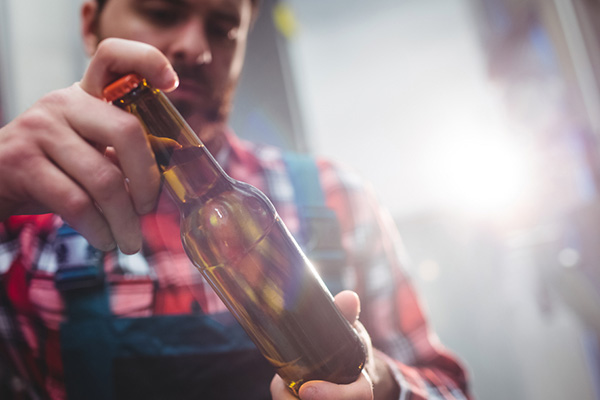
To sum up…
When it comes to serving alcohol and making mixed drinks…
…knowing how much alcohol is in a given drink is crucial. To determine flavor and viscosity, you must first determine how much is present in a drink.
A quick reminder!
Alcohol is one of the most often abused and addictive drugs. Alcohol use disorder (AUD) affects about 13% of persons in the United States. 1 in every 8 adults! Alcohol has a wide range of side effects.
Take it easy on the drinks!
Whether you’re buying it from a store or creating it at home…
To make the best alcoholic beverage possible, always keep ABV and its effects in mind.
Furthermore…
Measurements are crucial for learning how to precisely calculate percentages and figures. The rules for making precise measurements go hand-in-hand with the measurements themselves.
So…
You’ll know how to get the ABV percentage and what it means the next time you buy a bottle of wine or a six-pack of beer.
